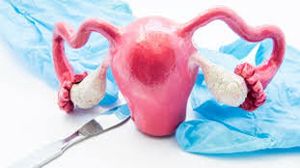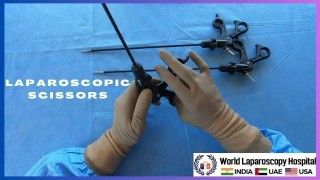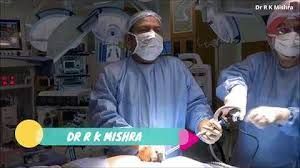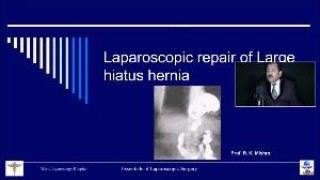Cholecystectomy for Mucocele of the Gallbladder, Ensuring Optimal Gallbladder Health
Add to
Share
1,387 views
Report
2 years ago
Description
Cholecystectomy for mucocele of the gallbladder is a vital surgical procedure aimed at providing relief and restoring optimal gallbladder health. Mucocele refers to the abnormal accumulation of mucus within the gallbladder, which can lead to various complications if left untreated. Cholecystectomy, the surgical removal of the gallbladder, offers a definitive solution for managing mucoceles and preventing potential complications. The mucocele of the gallbladder occurs when the gallbladder becomes distended due to the accumulation of thick, gelatinous mucus. This condition can be caused by factors such as gallstones, inflammation, or blockage of the gallbladder ducts. Mucoceles can result in symptoms such as abdominal pain, bloating, nausea, and vomiting. In some cases, complications like gallbladder rupture or infection may arise, posing a serious risk to the patient's health. Cholecystectomy, whether performed through traditional open surgery or minimally invasive techniques such as laparoscopy or robotic-assisted surgery, provides a reliable and effective solution for mucocele management. The surgical procedure involves removing the gallbladder entirely, eliminating the source of mucus accumulation and preventing further complications. During the surgery, the surgeon carefully dissects the gallbladder and its associated structures, ensuring complete removal while preserving the surrounding tissues. In cases where the mucocele has caused significant inflammation or adhesions, the surgeon's expertise is crucial in navigating the surgical field and minimizing potential risks. By performing a cholecystectomy for mucocele of the gallbladder, not only is the immediate relief of symptoms achieved, but the risk of complications, such as gallbladder rupture or infection, is effectively mitigated. Removing the mucocele and gallbladder also eliminates the possibility of future gallstone formation and related issues, promoting long-term gallbladder health. Minimally invasive techniques, such as laparoscopy or robotic-assisted surgery, offer several advantages for cholecystectomy. These techniques involve making small incisions, resulting in less post-operative pain, reduced scarring, shorter hospital stays, and faster recovery compared to traditional open surgery. Patients undergoing minimally invasive cholecystectomy often experience a quicker return to their daily activities and enjoy improved cosmetic outcomes. Choosing a skilled surgeon with expertise in gallbladder surgery is crucial for optimal outcomes. The surgeon will evaluate the patient's condition, taking into account factors such as the size and severity of the mucocele, as well as the patient's overall health. They will then determine the most appropriate surgical approach, whether it be open surgery or minimally invasive techniques, ensuring the best course of action for the patient's specific case. Cholecystectomy for mucocele of the gallbladder is a surgical procedure designed to address the condition where mucus accumulates within the gallbladder. This condition, known as mucocele, can lead to various complications if left untreated. Cholecystectomy, the removal of the gallbladder, is an effective solution for managing mucoceles and ensuring optimal gallbladder health. Mucoceles occur when mucus builds up within the gallbladder due to factors such as gallstone blockage, inflammation, or obstruction of the gallbladder ducts. This can cause symptoms like abdominal pain, bloating, nausea, and vomiting. If left untreated, mucoceles can lead to more serious complications such as gallbladder rupture or infection, posing risks to the patient's well-being. Cholecystectomy is performed through either traditional open surgery or minimally invasive techniques like laparoscopy or robotic-assisted surgery. The surgical procedure involves removing the gallbladder entirely, eliminating the source of mucus accumulation and preventing future complications. During the surgery, the surgeon carefully dissects the gallbladder and surrounding structures, ensuring complete removal while preserving nearby tissues. The surgeon's expertise is crucial, particularly in cases where the mucocele has caused significant inflammation or adhesions. By undergoing cholecystectomy for mucocele of the gallbladder, patients not only find relief from their symptoms but also minimize the risk of complications. Removal of the mucocele and gallbladder eliminates the potential for gallstone formation and related issues, promoting long-term gallbladder health. Minimally invasive techniques offer several advantages for cholecystectomy, including smaller incisions, reduced post-operative pain, faster recovery, and improved cosmetic outcomes. Patients undergoing these techniques often experience shorter hospital stays and quicker return to their regular activities. Choosing a skilled surgeon experienced in gallbladder surgery is essential for successful outcomes. The surgeon will evaluate the patient's condition, taking into account factors such as the severity of the mucocele and the patient's overall health. They will determine the most appropriate surgical approach, whether open surgery or minimally invasive techniques, to ensure the best course of action for the patient's specific needs. In summary, cholecystectomy for mucocele of the gallbladder provides relief and restores optimal gallbladder health. This surgical procedure effectively eliminates the mucocele, prevents complications, and offers long-term benefits. Whether performed through open surgery or minimally invasive techniques, cholecystectomy addresses the underlying cause of the mucocele, providing patients with symptom relief and reducing the risk of future complications. Consulting with a skilled surgeon ensures comprehensive care and successful management of mucoceles of the gallbladder.
Similar Videos






